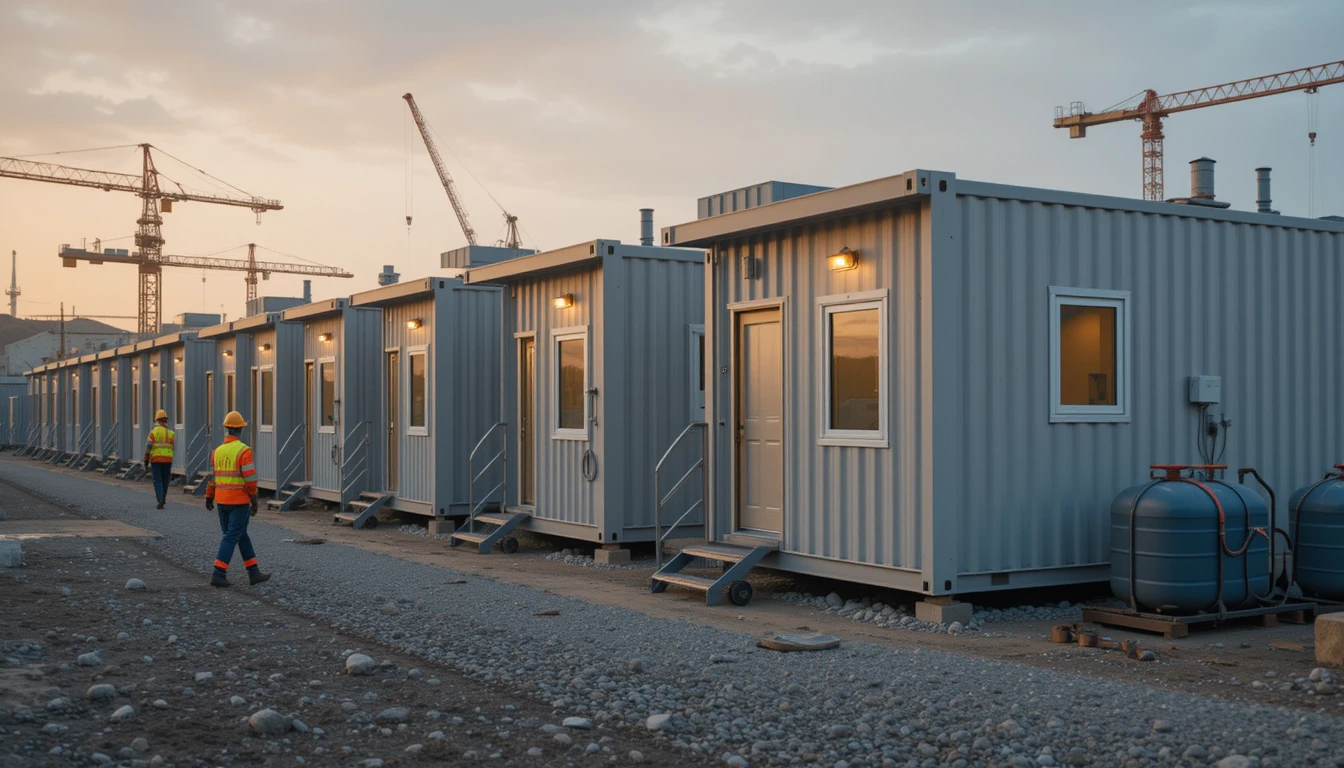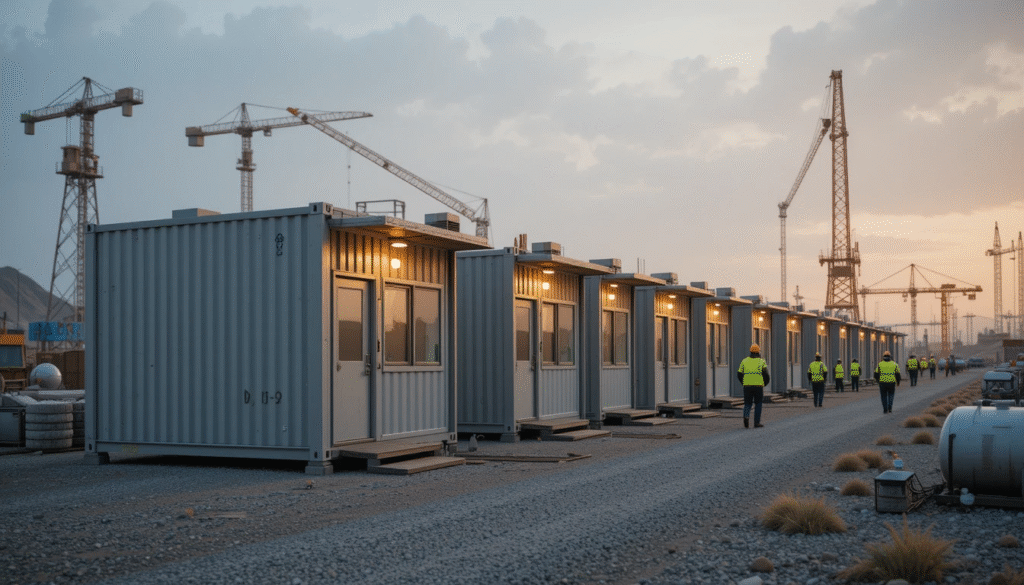Phone:
(701)814-6992
Physical address:
6296 Donnelly Plaza
Ratkeville, Bahamas.

As the United States continues to develop infrastructure, expand industrial operations, and respond to large-scale labor needs, there is a growing demand for temporary worker housing that is affordable, scalable, and efficient. Enter Labor Camp Containers-a modern solution for accommodating workers in remote, high-demand, or temporary project locations.
These modular, prefabricated housing units are already widely used around the globe in sectors such as construction, mining, oil & gas, and agriculture. Now, as labor mobility and infrastructure expansion increase in the U.S., labor camp containers are gaining attention as a smart alternative to traditional worksite housing.
🍓 Click Here to Buy Tiny homes 🥃✨
🛒🍓 Grab Your Tiny homes Now! 🥂💎
🍹🍓 Enjoy the Sweetness – Buy Tiny homes Today! 🛍🔥
Labor camp containers are portable, prefabricated housing units typically constructed from steel shipping containers or modular panels. Designed for easy transportation and rapid deployment, these structures serve as temporary housing solutions for labor forces in areas where permanent housing is unavailable, unaffordable, or unnecessary.
Each container unit may function as:
These containers can be configured to create full-scale labor camps capable of housing dozens to thousands of workers, with infrastructure and utilities built around the layout.
The United States is no stranger to large-scale, labor-intensive projects. From infrastructure modernization and renewable energy installations to disaster recovery efforts and seasonal agricultural work, the need for on-site, temporary housing is critical to keeping projects moving efficiently.
Labor camp containers offer a strategic solution to:
Their fast deployment, cost-efficiency, and customizability make them ideal for a wide range of labor scenarios across the country.
Labor camp containers are easy to transport by truck, rail, or ship and can be installed in just a few days. This is especially valuable for industries working under tight timelines.
Each unit is modular, allowing companies to expand or contract camp size based on workforce demand. Units can be stacked or arranged side by side to maximize land use.
Compared to traditional brick-and-mortar or trailer housing, container solutions are more economical. They reduce construction time and labor costs while offering long-term reuse potential.
Made of weather-resistant steel, these units are suitable for challenging climates-from the heat of Texas to the cold of Alaska. Insulated walls and HVAC systems help maintain livable conditions inside.
Modern labor camp containers can be outfitted with beds, storage, lighting, plumbing, and even high-speed internet. Units can also include fire safety systems, soundproofing, and privacy measures.
Labor camp containers are typically arranged into a community-style layout, with various unit types:
By creating self-contained, organized living environments, employers can ensure both worker satisfaction and project efficiency.
Multi-year construction projects often require housing for hundreds of workers. Labor camp containers offer flexibility and security on ever-changing construction sites.
These sectors operate in remote locations where access to housing is limited. Container camps ensure workers stay close to job sites, reducing commute times and increasing productivity.
Seasonal farmworkers, particularly in states like California, Texas, and Florida, can be accommodated safely and affordably using container-based solutions, reducing the reliance on unsafe or informal housing.
After natural disasters or public emergencies, labor camps are essential for housing emergency crews, medical staff, and rebuilding teams.

While labor camp containers are efficient, there are some challenges to consider:
To meet labor demands while ensuring humane conditions, the U.S. must invest in intelligent, scalable worker housing like container-based labor camps. These solutions offer a balance of affordability, speed, and sustainability, helping industries thrive while protecting the dignity of essential workers.
Federal and state governments can play a role by:
Workers can stay in container accommodations anywhere from a few weeks to several months, depending on the project duration. Well-maintained camps are suitable for year-round occupancy with proper insulation, sanitation, and upkeep.
Modern labor camp containers may include:
Shared facilities such as dining, recreation, and sanitation blocks are often provided in larger camps.
Yes-when sourced from reputable manufacturers and installed properly, container units comply with U.S. building codes, OSHA safety standards, and local zoning laws. Regular maintenance and oversight are essential to meet legal and ethical obligations.
Costs vary based on size, location, and amenities. Basic sleeping units range from $5,000 to $10,000, while outfitted containers with bathrooms or kitchens may cost $15,000 to $25,000. Additional infrastructure-power, water, septic, roads-adds to total setup costs.
Labor camp containers represent a forward-thinking approach to worker housing in the United States. Whether for construction crews, farmworkers, or emergency responders, these modular solutions offer practical, scalable shelter that meets today’s labor demands without sacrificing safety or dignity.
As industries evolve and projects push deeper into remote or underserved areas, investing in high-quality container housing isn’t just good logistics-it’s a commitment to treating the workforce with the respect they deserve.